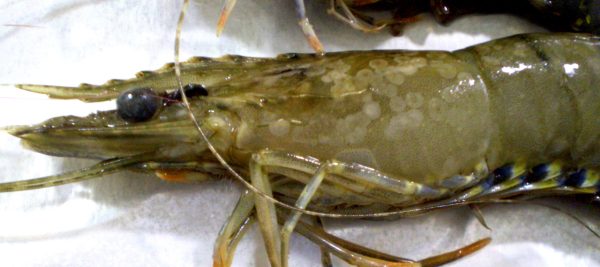Rodney Stevens
A Palmers Island prawn farm has implemented biosecurity procedures after the highly contagious White Spot virus was detected in stock this month.
The White Spot outbreak was confirmed by NSW Department of Primary Industries DPI and Australian Centre for Disease Preparedness ACDP tests on February 12.
On February 16, a temporary control order was issued including restrictions on the movement of raw, uncooked green prawns out of an area defined as the Clarence River Control Zone, while containment, source detection and surveillance activities are underway.
Prawns with white spot disease may have a loose shell with numerous white spots 0.5-2.0 mm in diameter on the inside surface of the shell and a pink to red discolouration.
NSW Chief Veterinary Officer, Sarah Britton, said the affected property followed biosecurity protocols and immediately reported their detection to the department.
“NSW DPI acted swiftly to work with the farm to contain and manage white spot,” she said.
“Biosecurity teams are undertaking tracing and surveillance to identify the source and pathway of white spot into NSW.
“DNA sequencing from the ACDP will determine if this detection matches any previous white spot samples.
“As a precaution, a short-term control order has been issued to restrict the movement of raw, uncooked green prawns from the Clarence Estuary.”
As a result of the control order, prawns and polychaete worms may only be moved out of the Clarence River Control Zone if they have been cooked.
There are exemptions for certain uncooked seafood species, such as crabs and lobsters, to be moved out of the estuary for the purpose of human consumption only, which must be cooked as soon as possible upon arrival at the destination.

This is the second time in the past six months that White Spot has been detected on a Palmers Island prawn farm following a detection at another farm in August 2022.
A NSW DPI spokeswoman said that case of White Spot at another prawn facility and was contained and eradicated from the enclosed hatchery in September that year.
NSW Government movement restrictions have been in place to limit the risk of white spot entering NSW since it was first detected in south-east Queensland in 2016.
Dr Britton said there was no indication the virus has spread beyond the affected farm.
“Importantly, NSW prawns remain safe for human consumption and consumers can continue to purchase NSW prawns from local seafood suppliers,” she said.
“NSW DPI takes biosecurity matters like these extremely seriously and we will continue to work closely with industry to minimise disruption.”
Despite enquiries by the CV Independent, a NSW DPI spokeswoman said the prawn farm, can’t be identified.
“We cannot further identify the location beyond Palmers Island due to growers and property owners’ privacy,” the spokeswoman said.
White Spot most commonly enters an ecosystem when fishermen use cheap, supermarket bought foreign prawns as bait which carry the virus.
To prevent White Spot in Australia, fishermen are advised to always by ‘bait prawns’ from a reputable fishing outlet and never use imported prawns as bait.